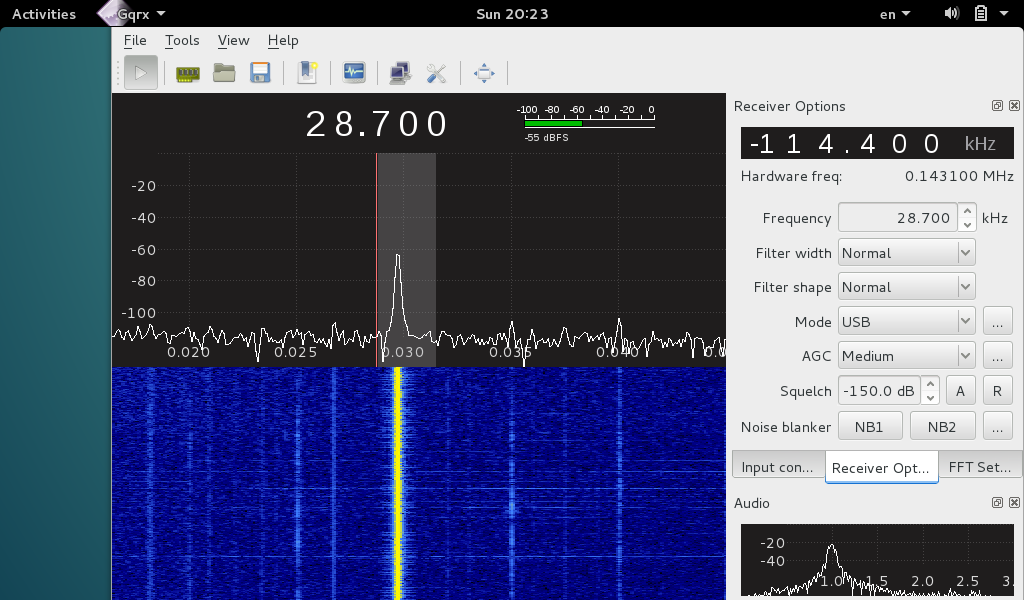Photos





Recently, I was contacted in IRC by prog, the author of SDR# and developer of the Airspy hardware - I was offered two Airspy models for
review.
I've also got an RTL-SDR, so, in my opinion, a comparison would be
interesting too.







In addition to both receivers, I've received a pair of high-quality USB cables with ferrite chokes.
The models differ considerably since they're intended for different purposes.
| Device | Frequency range | Sample rate |
|---|---|---|
| Airspy HF+ | 0.009 - 31, 60 - 260 MHz | 768 kHz |
| Airspy R2 | 24 - 1700 MHz | Up to 10 MHz1 |
| RTL-SDR | 24 - 1700 MHz2 | Up to 2.5 MHz3 |
As you can see, RTL-SDR and Airspy R2 work well for UHF reception, while the HF+ is focused on HF and VHF.

| Signal | HF+ | R2 | RTL-SDR |
|---|---|---|---|
| FM, strong |  |
 |
 |
| FM, weak |  |
 |
 |
It's clear that both HF+ and R2 perform much better than an RTL-SDR.


Tip: you can use the decimation setting of the R2 to trade bandwidth for SNR and dynamic range.
RTL-SDR and Airspy HF+ can receive the shortwave bands.
I was once again amazed at the sensitivity of the HF+ - it could receive a few stations with the terrible antenna you can see above,
which is more suited to UHF reception.
The RTL-SDR could receive some signal too, albeit it was much weaker.
And when I went outside and attached a 10 - 15m long-wire antenna to the appropriate input (via a terminal block, a short piece of coaxial cable and an F-to-SMA adapter - there was no matching circuitry such as a balun at all!), the results were astonishing.



And now, a comparison with RTL-SDR:
| Signal | Airspy HF+ | RTL-SDR1 |
|---|---|---|
| RTTY, 10100.8 kHz |  |
 |
|
WEFAX, 13882.5 kHz
Note the strong AM station nearby. |
 |
 |
| MSK carrier, VLF, 29.7 kHz2 |  |
 |
The RTL-SDR is unsurprisingly deaf, since it's not intended for HF reception.
The only disadvantage if the Airspy units I noticed is that the R2
sometimes receives images of the GSM band on about
300 and 600 MHz.
prog suggested using a table of optimal gain settings, this does
help greatly, however some interference is still present.
I think the Airspy receivers would definitely satisfy an advanced
user who already has some experience working with SDR, to whom
some cheaper solutions such as RTL-SDR don't offer enough
performance and features anymore.
There's also dedicated software called SDR#, well-known among the
SDR enthusiasts, but it only works under Windows, which I don't
use due to my desire to stick with FOSS.
Credits: prog for the supplied hardware; Alexandru Csete, the author of gqrx, my favorite SDR program - its screenshots are displayed above.